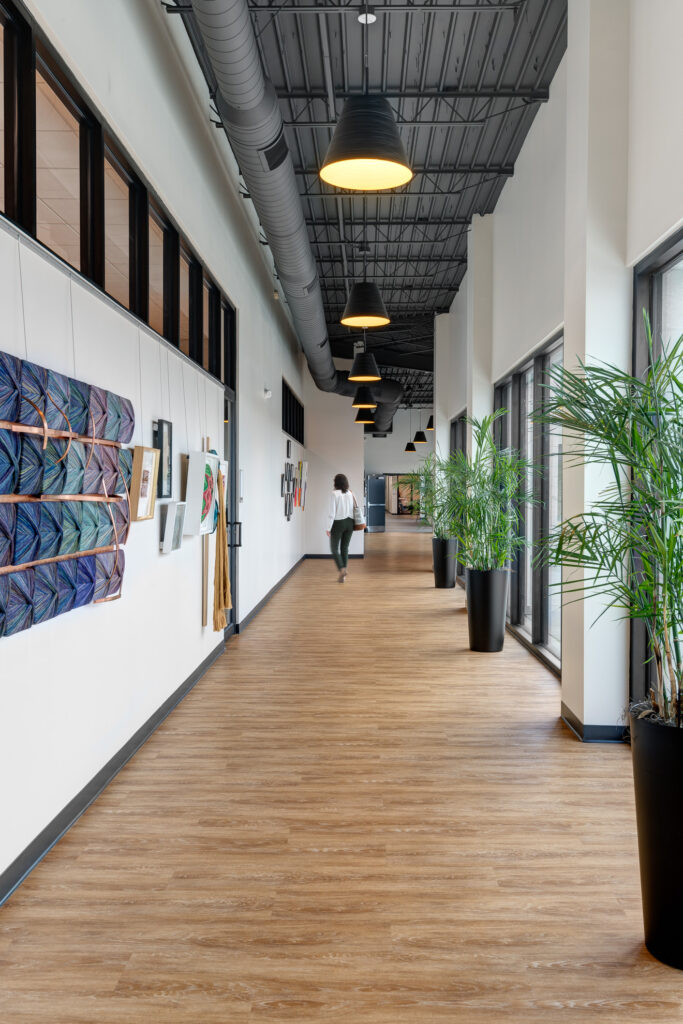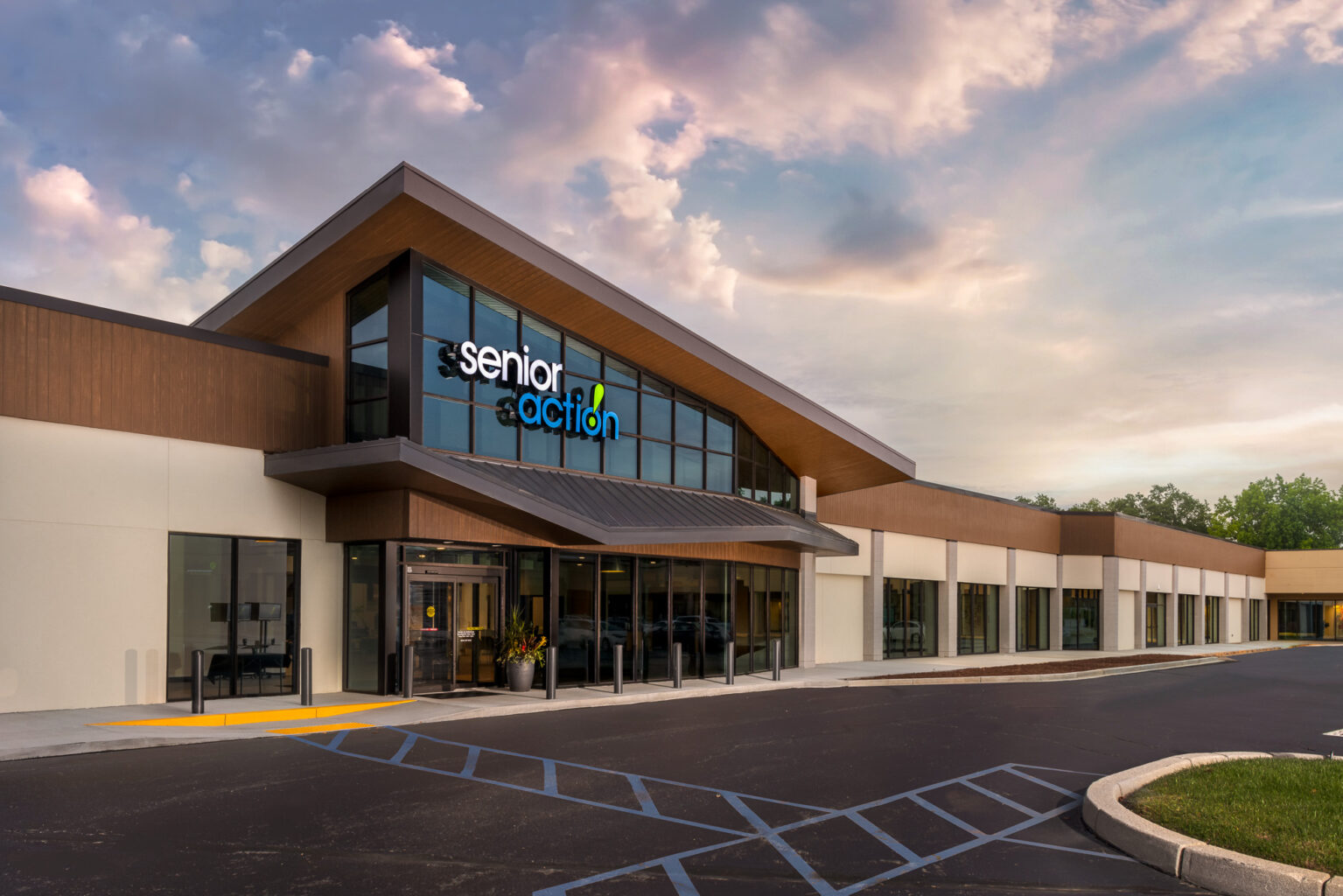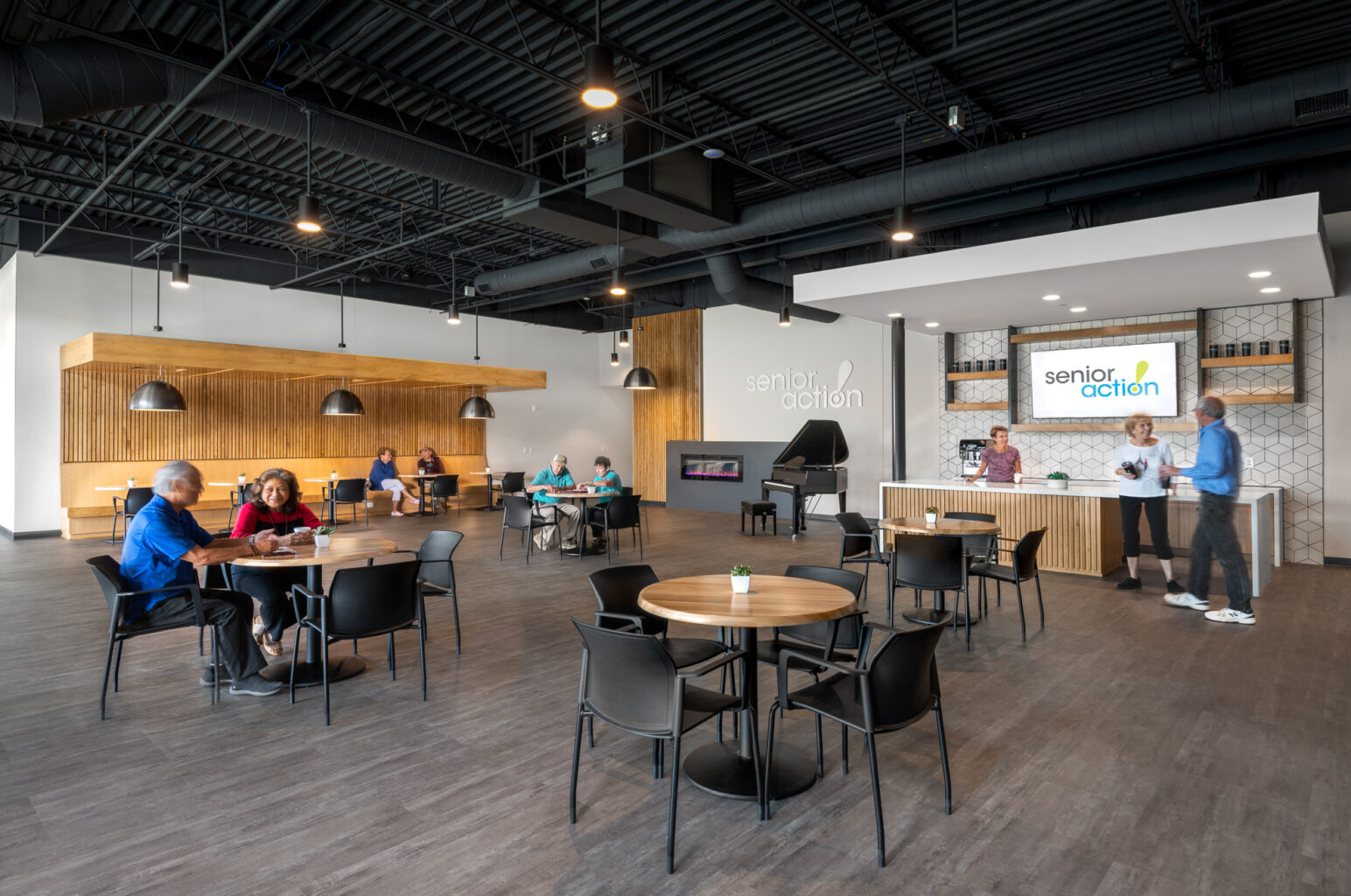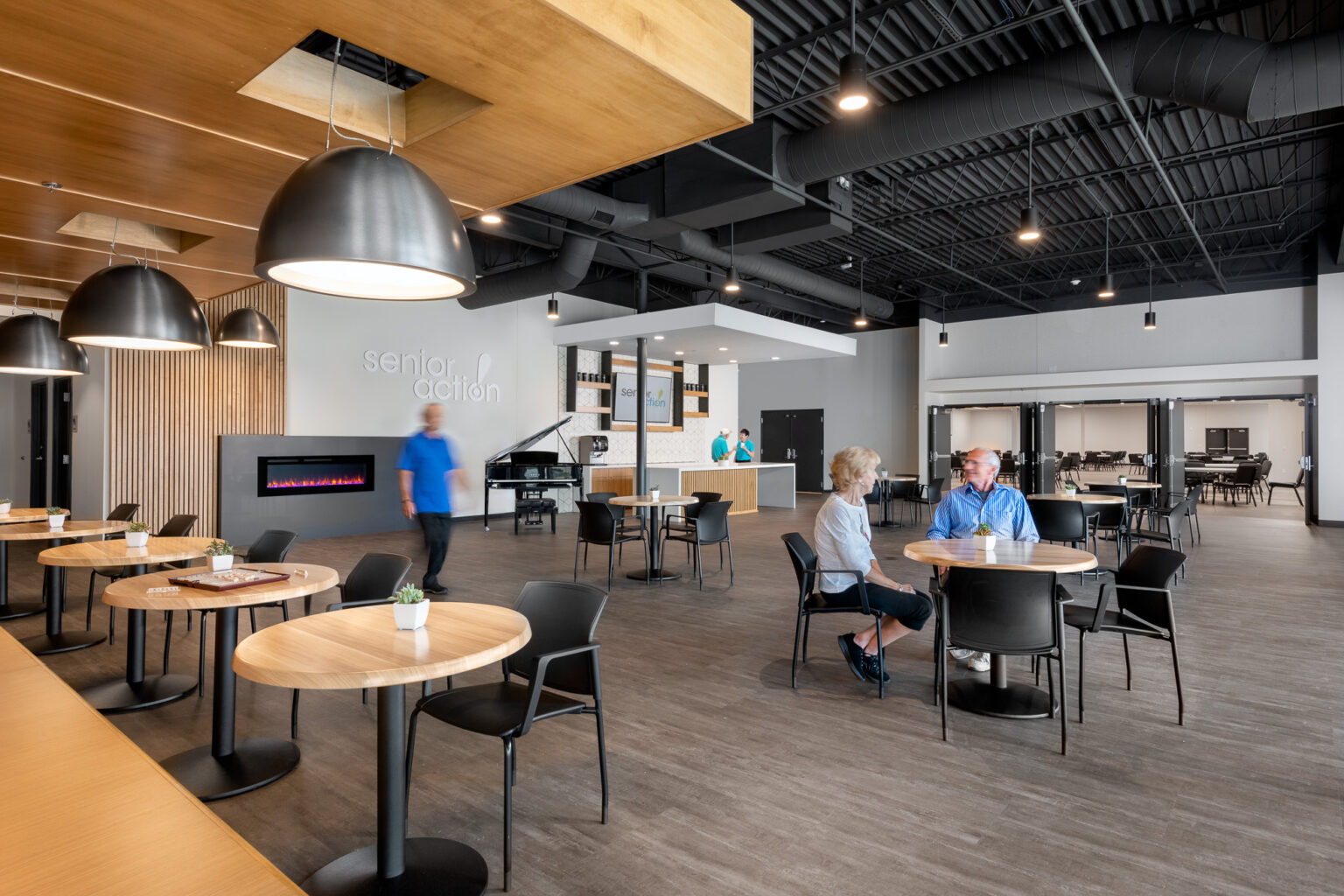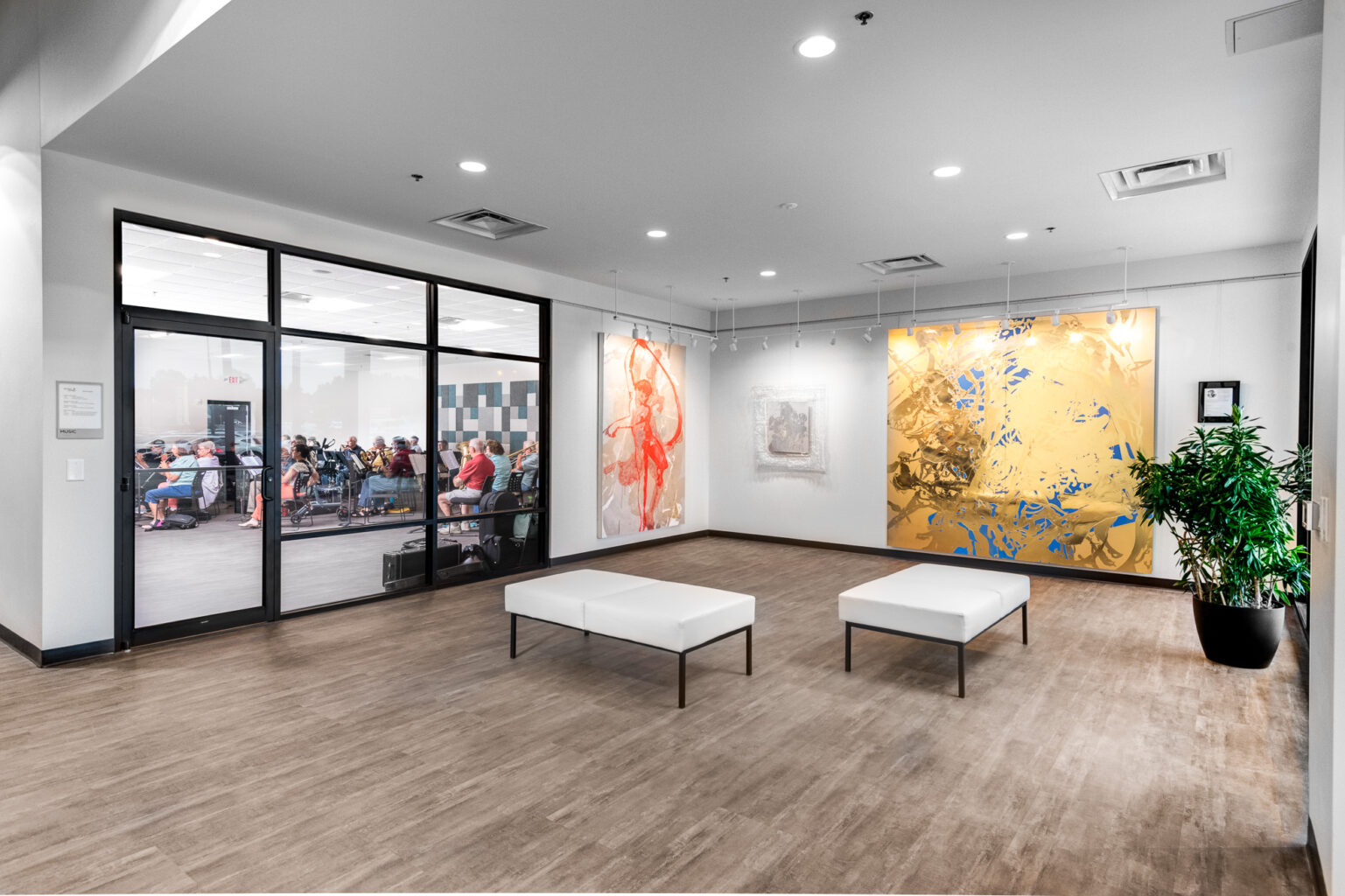Enhancing the Quality of Life for Seniors
The American population is aging. Per the US Census Bureau, the number of Americans ages 65 and older is projected to nearly double from 52 million in 2018 to 95 million by 2060. In 1950, the life expectancy for people living in the United States was 68 years. By 2017, Americans were living to be over 78 years old (Sherry L. Murphy). Thanks to advancements in scientific and healthcare research, people are living longer. Municipalities that invest in community centers and programming for seniors reap the benefits of reduced physical and mental health services for the elderly. In response to these developments, architects must be sensitive to the needs of older populations when designing such spaces.
The Need
It is wonderful that people are living longer. Age, however, can come with a series of physical, mental, and social health-related issues. People who live longer are more likely to suffer from Alzheimer’s Disease or other health problems which increases Medicare expenditures. When seniors lose their independence by not being able to drive, they must rely on family or community members for assistance. Often the loss of a spouse can lead to isolation, reduced resources and emotional support, leading to depression.
Non-profits like Senior Action in Greenville, South Carolina help seniors live active, healthy lifestyles. Senior Action was founded in 1967 and experienced such unprecedented growth over the last decade and a half that the organization purchased a nearby shopping center to meet their programmatic needs. Unlike many municipalities who give seniors left over structures, Senior Action wanted to create a “sense of place” for their membership to feel valued and welcome. Through an extensive renovation, nearly 34,000 square feet were re-designed to enhance senior’s social, mental, and physical well-being.
The Project
Converting a shopping center to a community center supplied challenges from providing large spaces within the existing column spacing and roof height to creating a destination that is unique yet blends with the remainder of the shopping center. To meet their goals, a distinctive entrance that is easily recognizable from the street and an interior that feels modern yet comfortable was integral. Materials used to complete this transformation had to not only be beautiful and long-lasting, but safe for seniors and easy to maintain for staff.
A large, open lobby welcomes Senior Action members into the building with comfortable seating and a coffee cafe. It is a socially engaging place to listen to music, play games or simply sit by a fireplace. As one moves through the building, they do so along a corridor that features warm wood tones and an abundance of natural daylight. These biophilic design elements have a calming effect and can instill a sense of relaxation, similar to what people experience when in nature.
Aware of the effects of aging, special attention is needed for entryways, circulation paths and the materials used to create them. At Senior Action, entry doors are automatic sliding doors and as many doors as possible are push/pull, without levers, to address the limitations of mobility and arthritis. Flooring can also greatly affect older people. It needs to be smooth and have minimal transition points, so that seniors who shuffle their feet or do not lift their legs as high, can easily and safely move from one space to another. When using various types of flooring, designers can ensure that materials such as luxury vinyl planks and carpet will all be the same thickness eliminating the need for any added transition. Color contrast in flooring is also important and can alert seniors with sight limitations know that a change of material is occurring.
Specialized Programming
To encourage physical, social, and cognitive engagement, Senior Action has extensive programming in the visual arts – pottery, painting, drawing, and fiber arts. They offer classes that range from financial planning and cooking to navigating Medicare, and they have facilities to support such programming. Along with traditional classrooms, the new facility features a fine arts center, gallery, fitness center, and dance classrooms.
Opportunities to increase physical activity are central to Senior Action programming. In contrast to past generations, seniors today have more disposable income although it is offset by increased obesity and health issues. In one study, Wake Forest School of Medicine found that the cognitive memory and thinking scores in dementia patients did not dip for participants who exercised over a twelve-month period. At Senior Action, two large dance studios with cushioned flooring and floor to ceiling mirrors host everything from ballroom classes to line dancing, yoga, Tai Chi and circuit training. Many of the classes promote stretching and flexibility to enhance mobility. The fitness center is equipped with weights and cardiovascular equipment such as treadmills, elliptical machines, treadmills, and rowing equipment.
One of the benefits of these specially programmed spaces and corresponding classes is giving members agency to choose exercise routines that suit their needs. Now, Senior Action not only has more space, but a contemporary space, and that is attracting younger members of the senior population allowing participation to begin at age 55.
The Payoff
Senior centers make a statement on how much seniors are valued and how the people within the walls are perceived by the community. In the first six months Senior Action was open, they added 1,000 new members. Andrea Smith, the Executive Director, spent countless hours bringing her vision to life. Her efforts were confirmed when a senior stopped her in the hallway one afternoon and said, “This building makes me feel important.”
As members of society who should receive the utmost care, the well-being of senior citizens should remain a top priority. States and municipalities who invest in senior centers or senior programming will save on healthcare costs and mental health services. Not only will it improve the health and wellness of our aging population, but it will have lasting effects on the quality of life for the broader community.
